- Administrator
- Albums and Singles
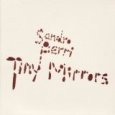 Throughout the history of life, humans are faced with the mortality of our parents, it's simply natural that we outlive our parents if everything goes normally. However, I can't think of anybody who is or was quite ready to deal with the life altering effects that extreme illness (an aggressive "terminal" cancer) has on everybody close. After weeks of dealing on a daily basis with medical uncertainty, insane drug side effects, mental instability, and a "care" system which ejects patients prematurely from necessary hospitalization, I finally had a window of opportunity for a break, and Tiny Mirrors will live forever in my memory for the soundtrack for that weekend.
Throughout the history of life, humans are faced with the mortality of our parents, it's simply natural that we outlive our parents if everything goes normally. However, I can't think of anybody who is or was quite ready to deal with the life altering effects that extreme illness (an aggressive "terminal" cancer) has on everybody close. After weeks of dealing on a daily basis with medical uncertainty, insane drug side effects, mental instability, and a "care" system which ejects patients prematurely from necessary hospitalization, I finally had a window of opportunity for a break, and Tiny Mirrors will live forever in my memory for the soundtrack for that weekend.
A friend of mine was working and living in New Hampshire for the summer and kept trying to get me up. I couldn't make it there until August but the day before I departed, Sandro Perri's second non-Polmo Polpo release arrived in the mail. It didn't land in the CD player until I had actually arrived in the beautiful little tourist town of North Conway, usually overpopulated during ski season but comfortably busy during the summer. Over the course of the weekend my friend and I were like two kids free from parents and without a worry in the world: we swam in a river, a lake, and a waterfall, bicycled around, drove up a steep mountain, took numerous photos, and drank. Tiny Mirrors didn't leave the player.
The gently moving whimsical melodies are perfect for a getaway weekend where the music and mood are all completely carefree. Driving through a comfortably congested town at 5 miles per hour with the windows all the way down in the warm summer air as fat tourists walk slowly the streets was a far more amazing experience than I could have ever dreamt. Every song on Tiny Mirrors sounds un-electronic and un-amplified, like a room of friends enjoying their time playing together (operant word: play - this music doesn't sound like work to the musicians, but it sounds like fun). It's quite a departure from the first Polmo Polpo recordings but hardly unexpected from Perri's last release, the fantastic Sandro Perri Plays Polmo Polpo EP. The drums are quiet and subtle, shuffling with gently brushed cymbals and a lighlty tapped tympani or kick; a faint bass provides more rhythmic backbone while guitars are a combination of acoustic strumming, nylon string picking, and Hawaiian-like pedal-steel sounds. Occasionally other non-electronic instruments make their appearance, like a flute melody on "The Mime" or brass instruments like the euphonium and trombone on the catchy "White Flag Blues" or the '70s-sounding "Love Is Real," respectively, but they're never overpowering. Perri isn't afraid to sing and let the vocals lead the songs. It's unique as this is what I feel is one of the most tragic down sides to non-top-40 pop music: the burial of the voice.
It's almost eerie, too, for me personally, that the subject matter of Perri's lyrics move from familial reflection in "Famiy Tree" to the summery lazy longings on "City of Museums," where Perri sings "As I pay to dream an empty beach where my spirit combs the sand, Where I am a bum." It's September now but the mere sound of the first notes of the first song bring me back to a simple weekend that I will never forget. I have Sandro Perri to thank for that. I can't promise this album will be as important in anybody else's life but for mine, it will always be close to my heart.
For the record, my mom's doing much better right now both physically and mentally and all who got to see her at the last Brainwaves know she's always been supportive in my music endeavors. Expect to see her next year at the fest again in the balconies.
samples:
Read More
- Administrator
- Albums and Singles
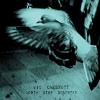 It is a long time since I have heard Vic Chesnutt, first becoming aware of him like I would expect many people my age did by way of a tribute album in the mid-90s bought on the strength of the artists covering him. That this is his 11th album is a big surprise and listening to it I lament not giving him the attention he obviously deserves previously. This album is filled with tender, witty, funny and heart wrenching moments of lyrical clarity.
It is a long time since I have heard Vic Chesnutt, first becoming aware of him like I would expect many people my age did by way of a tribute album in the mid-90s bought on the strength of the artists covering him. That this is his 11th album is a big surprise and listening to it I lament not giving him the attention he obviously deserves previously. This album is filled with tender, witty, funny and heart wrenching moments of lyrical clarity.
Chesnutt's lyrics are by far and away some of the most impressive I have heard in a long time. On North Star Deserter his singing is like a tired Townes Van Zandt but his humor is not a million miles away from Leonard Cohen's but sharper, particularly on the acidic "You Are Never Alone," where he croons about all the bad things and mistakes people can do but it is OK because you can always fall back on surgery, an abortion or some other "Get out of jail free" card. On a more sombre note, the epic "Splendid" more than lives up to its name but the jewel in the album's crown is the stunning "Debriefing." Chesnutt's vocals are given in quiet and earnest tones while a storm of music and feedback sweeps past him. It is soul stirring stuff to say the least.
The use of Thee Silver Mt. Zion Memorial Orchestra + Tra-La-La Band as a backing group is both a surprising and excellent choice. I did not really cop that it was them playing until I happened to be looking at the sleeve notes, the songs they are present on are a far cry from the distinctive sound they have cultivated on their own. They play sensitively and respectively within Chesnutt's world, adding details that build on his words to make them shine even brighter than before. The double tracking of Chesnutt's voice on "Glossolalia" and the howling backing vocals of the others is as close as it ever sounds to a traditional Silver Mt. Zion song but it is still worlds apart thanks to Chesnutt's unique take on writing lyrics.
If there are any faults present on North Star Deserter, they are well hidden. The production is beyond pristine, as one would expect from Constellation and their commitment to quality. The liner notes state that the sessions for this album were among the last made at the original Hotel2Tango and really there could not be a more fitting and beautiful epitaph for the legendary premises. However, hopefully this will be the start of a continued working relationship between Chesnutt and the Constellation crew. More albums like this are not just welcome, they are begged for.
samples:
Read More
- Administrator
- Albums and Singles
 As dub techno continues its vibrant resurgence, there have been few releases in electronic music more anticipated in 2007 than this one. Having already achieved significant attention with Andy Stott's critically acclaimed Merciless and its accompanying singles, Modern Love, a recording arm of the magnificent online shop Boomkat, will only see its stock rise (or perhaps, in inventory terms, fall) with this release.
As dub techno continues its vibrant resurgence, there have been few releases in electronic music more anticipated in 2007 than this one. Having already achieved significant attention with Andy Stott's critically acclaimed Merciless and its accompanying singles, Modern Love, a recording arm of the magnificent online shop Boomkat, will only see its stock rise (or perhaps, in inventory terms, fall) with this release.
For much of the techno faithful, Rod Modell holds court as if a demigod. Mere rumors of new material, let alone the appearance of a modest white label, incites delirious levels of fanatical anticipation, an impassioned fervor contradictory to his largely laidback body of work. Such has been the reaction by these zealots of deepness to the Echospace project, a collaboration between Modell and the reasonably established Stephen Hitchell. Modern Love cleverly dropped four 12" records in advance of this album-length release, clearly appealing to the core audience and its preferred format. Now that those eager consumers have devoured these allegedly sold-out slabs of wax, the rest of us can sit back and enjoy an uninterrupted blend of these eloquent experiments.
Composed using entirely analog means and instruments, a reactive methodology undertaken by more than a few likeminded artists lately, The Coldest Season obstinately delivers incongruous shivers in the heat of this summer's unruly refusal to decently depart. These nine tracks could easily have been recorded in a nuclear winter with their practically subzero soundscapes and frozen, spare beats actually contradicting the humming machines that produced them. While I have no intention of turning this review into a full-on soapbox diatribe, it seems so strange and downright incredible to me that dub, a fantastic sound which originated from the tropical island nation of Jamaica, has become so malleable as to apply to works such as this. Still, Modell and Hitchell have more than succeeded in creating such a frigid ambiance here.
From the track titles, however, it appears Echospace's fixations lie amongst the stars rather than on the earth. "First Point Of Aries" hisses like the microscopic brushing of celestial dust against the remains of a smashed satellite, its eventual rhythm systematically flicking at the larger particles. Nearly half of the tracks on The Coldest Season surpass the ten-minute barrier, an absolute must for those who seek to explore the as-yet undiscovered limits of electronic dance music. The cool post-Detroit pulsating chords of "Sunset" brush up against unwieldy traveling frequencies before a crisp kick drum and some friable hi-hats pierce through and, for our entertainment, digitally damage the original messages. Epic highlight "Elysian" unleashes its ghostly, heroic funk early on, picking up momentum with every dissonant measure, while "Aequinoxium" unravels agile, echoing beats over oppressive, crepuscular space.
Though I may be reproached for saying this, I honestly consider Vladislav Delay's inexplicably underappreciated Whistleblower to be a superior document compared to this long awaited album. With rumors of the creative dissolution of Basic Channel / Rhythm & Sound pioneers Mark Ernestus and Moritz Von Oswald blowing in the wind, this duo, to some, appears poised to seize their throne. I'd beg to differ, however, based on my experience with the conspicuous but frequently bromidic The Coldest Season, and only go so far as to concede that Echospace will at least eat their lunch.
samples:
Read More
- Administrator
- Albums and Singles
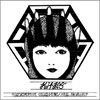 This one-man noise project opts to not lean on the more "rock" elements of some of his contemporaries such as Wolf Eyes and instead goes for an early industrial and vaguely krautrock vibe that sets this disc apart from others in the genre.
This one-man noise project opts to not lean on the more "rock" elements of some of his contemporaries such as Wolf Eyes and instead goes for an early industrial and vaguely krautrock vibe that sets this disc apart from others in the genre.
Chris Forgues does love making noise, and that comes across quite obviously on most of these tracks. However, instead of just blowing out speakers, he is also interested in using his array of home built oscillators and effects to create a more moody, atmospheric backing to the destruction. "Glitter Raider in the Hall of Triumph" exemplifies this, the home made gear used to create the 1960s sci-fi tones that open the track and the spoken word vocals belie the noise explosion that sets in just a few minutes later. The vaguely musical sounds of the home made gear also appear on "Poison Blur" in the form of a cheesy 1970s Eurotrash art flick, but the mix stays tamer on a backing of subbass oscillator swells and other ambient effects.
Some of the other tracks are more than happy to satiate the need for full on noise abuse, such as the unsubtle microphone abuse and feedback loops of "Pink Shadows" and the distorted siren squeals of "Army Corpse/Supermen 2," both of which call to mind the more conventional noise assaults of projects like Prurient.
There are also elements of the purely bizarre that are here as well, including the album's high point, "Nice Garden/Lady's Compact," which somehow manage to mesh the bleeps and buzzes of a 1983 video arcade with deep percussion sounds, the spastic squeaks of electronic mice, and the spoken word absurdist narrative of a guest female vocalist with some extremely harsh noise. It is as weird and wonderful as it sounds. The use of an answering machine message on "Cool People" may be reminiscent of Throbbing Gristle's classic "Death Threats" but is much less sinister, and augmented with a metric ton of noise.
Throughout Hallucination Guillotine/Final Worship, Forgues manages to not only lean into the world of heavy hitting violent noise, but into artful bizarreness as well. Balancing pummeling electronics and the absurd is a tough call, but he does it, and for that reason, this album may have appeal outside of the circle of folks that make orgasmic moans at the thought of the Merzbox.
samples:
Read More
- Administrator
- Albums and Singles
 It is reasonable to suggest that Múm are currently in a period of transition. If that's the case, they might choose to linger in this languid and childlike pop ecstasy.
It is reasonable to suggest that Múm are currently in a period of transition. If that's the case, they might choose to linger in this languid and childlike pop ecstasy.
In a sense, after the departure of the Vlatýsdóttir sisters, (who adorn the cover of Belle and Sebastian's Fold Your Hands Child, You Walk Like A Peasant), Múm are reduced to founding members Gunnar Örn Tynes and Örvar Þóreyjarson. On the other hand, for recording and touring purposes, they are actually now a seven-piece group with ideas and momentum aplenty. The newest member is Sigurlaug Gísladóttir, of mr.Silla, on vocals. Ólöf Arnalds, whose solo album Við og við is attracting interest in Europe, also sings and plays violin and guitar. There is also cellist Hildur Gudnadottir, who likewise has a solo debut out (Mount A), tours with Pan Sonic, and is a member of Angel with Schneider TM and Ilpo Väisänen. And finally, long-time Múm collaborator Eiríkur Orri Olafsson co-writes some tracks and plays trumpet (as he does when touring with Sigur Rós), pianette, moog, and (the often overlooked) whistling.
One striking aspect of Go Go Smear The Poison Ivy is the rhythmic invention of Samuli Kosminen. This begins with the opener "Blessed Brambles," which initially seems propelled by something resembling the sound of highly-amplified rubber bands being plucked. My attention was also drawn to a section of "They Made Frogs Smoke 'Til They Exploded" which recalls the bass line on Captain Beefheart's splendidly silly "The Blimp." By contrast, other parts of the record are slowly mutating dreamlike places constructed from what might be termed 'recovered, shredded blueprints of the Canterbury scene'. Indeed, I had to check to ensure that Robert Wyatt is not singing on the gorgeous stand-out "Moon Pulls," a hypnotic track that sounds as if it could have come from his quiet EP A Short Break.
Anyone seeking to hear the transformation of bleeps and squiggles—taken from who knows where—into very affecting melody could do worse than listen carefully to "Dancing Behind My Eyelids." I could be mistaken, but the use of toy instruments probably peaks on "Schoolsong Misfortune" and Eiríkur Orri Olafsson's serene trumpet on the following track, "I Was Her Horse," is a welcome contrast. There is a fine balance between upbeat and haunting on Go Go Smear The Poison Ivy, and the whole CD is bathed in a gorgeous sonic clarity that (ahem) ain't half hot, Múm. I guess its pop-ambience will be loved, reviled or tolerated, according to taste.
samples:
Read More
 Writing brief and delicate music at a time when epic bombast was the norm, Satie's compositions would go on to become some of the most influential of the 20th century. This disc presents some of his best-known work as well as a few pieces that are less frequently heard but no less enthralling.
Writing brief and delicate music at a time when epic bombast was the norm, Satie's compositions would go on to become some of the most influential of the 20th century. This disc presents some of his best-known work as well as a few pieces that are less frequently heard but no less enthralling.
- Administrator
- Albums and Singles
 Writing brief and delicate music at a time when epic bombast was the norm, Satie's compositions would go on to become some of the most influential of the 20th century. This disc presents some of his best-known work as well as a few pieces that are less frequently heard but no less enthralling.
Writing brief and delicate music at a time when epic bombast was the norm, Satie's compositions would go on to become some of the most influential of the 20th century. This disc presents some of his best-known work as well as a few pieces that are less frequently heard but no less enthralling.
The three tracks that make up "Trois Gymnopédies" are among Satie's most instantly recognizable. These pieces strongly influenced both Debussy and Ravel, who would later rise to greater fame and recognition than Satie ever did in his lifetime. Here Bojan Gorisek plays with more patience than I've heard on others' recordings, and it's an interpretation that suits the works admirably. Also fairly well-known are Satie's "Gnossiennes." Gorisek's phrasing emphasizes the songs' rich harmonic peculiarities with abrupt bursts of volume. Whimsical and playfully erratic, these pieces embody both Satie's wit and eccentricities perfectly.
Although Satie was the music director of Montmartre's Chat Noir cabaret, not much of his music reflects this aspect of his life. One of the few telling influences of that experience comes through in his "Je te veux," a waltz that became a popular song on the nightclub circuit. It was meant to accompany bawdy lyrics by Henry Pacory, which unfortunately are not included here. The song itself is one of his more straightforward pieces yet not lacking for exuberance. "Embryons desséchés," translated as "Dried Embryos," Satie says is incomprehensible even to himself: "I wrote it despite myself, impelled by Destiny." Its moments of rapidity and harmonic texture make it one of Satie's more unusual works.
His one-act comedy, "Le Piège de Méduse," is a precursor of sorts to Dada and Surrealism, music Satie describes as "seven tiny dances for Jonah the monkey." First published alongside three Cubist woodcuts by Georges Braque, the work is also notable for the fact that Satie first performed it in 1914 with sheets of paper between the piano's strings and hammers, one of the earliest examples of prepared piano on record. The 21 tracks of his "Sports et divertissements" were written to accompany a set of etchings by Charles Martin. Averaging about 30 seconds in length, they concern upper class recreational activities such as hunting, yachting, golf, and tennis, and contain plenty of tongue-in-cheek ennui considering their brevity. Of these, the longest and most entertaining is "Le Tango perpétuel," or "Nonstop Tango," in which Satie repeats the same melodic phrases of this traditional form, prefiguring the use of loops and repetition that was to come several decades later.
Not only is this collection an excellent introduction to Satie's work and the fundamental ideas that many others would later draw upon, Gorisek's invigorating performances breathes new life into these compositions for those who are already familiar with them in the first place.
samples:
Read More
- Administrator
- Albums and Singles
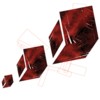 Portland-based artist Daniel Menche deconstructs the organ and trumpet on this latest album, yet little of the resulting work reflects these instruments in obvious ways. Instead, these four tracks sound like mechanical insects mating with pink noise and then giving birth to an apocalyptic swarm.
Portland-based artist Daniel Menche deconstructs the organ and trumpet on this latest album, yet little of the resulting work reflects these instruments in obvious ways. Instead, these four tracks sound like mechanical insects mating with pink noise and then giving birth to an apocalyptic swarm.
The first track starts on the threshold of audibility, patiently creeping closer with an insidious bass rumble. Each passing minute adds further layers of scratchy drone while the volume slowly but surely continues to rise. Subtle pulsations and cryptic Morse code messages pierce the veil only to be overtaken by a stronger distorted signal that clears everything in its path until abruptly vanishing and erasing everything that's come before. Menche's adept at starting a track at one location and ending it somewhere altogether different, leaving listeners few clues as to how they had arrived at their final destination.
Starting more delicately like a piano on fire, the second track contains more obvious structural changes, yet these aren't completely cut and dry either. Alien rhythms vie for dominance with what sounds like a melting phonograph playing melancholy classical music, and it is this struggle between these two elements that gives the track its drama. The 22-minute piece goes through several phases, including a lengthy inhuman passage that sounds like appliances run amok, before it ends with a triumphant soaring drone.
The third track begins with an alarm dropped off the deep end of a pool of static that learns to swim its way to the top. As it reaches the surface, it is unmasked as a fiery klaxon conqueror, swallowing every last drop of static before it eventually dies of hunger. The fourth track also opens with a slow and quiet fade as did the first, but this time proceeds with inventive panning and guttural blurps rather than swollen dense layers of sound. The organ is more apparent on this track, like aurora borealis shimmering in the night sky and settling briefly into an interstellar sigh. Towards the end comes a droning passage that sounds like a church organist onboard a descending airplane. Rather than building toward a fiery climax, instead Menche closes it with a meditative ending that dwindles peacefully.
At times sounding like a building collapsing in slow motion or else a late-night swim at the bottom of the ocean, Bleeding Heavens is proof of Menche's uncanny talent for mutating common sounds into tracks that are dizzyingly unworldly. A tour of his universe is unlike any other and well worth the time and attention invested in attentive listening.
samples:
Read More
- Administrator
- Albums and Singles
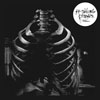 Another installment in the label's "Arc" series, the debut release from this NY based artist is a study in bedroom recording, a simple and lo-fi, yet captivating work of experimentation.
Another installment in the label's "Arc" series, the debut release from this NY based artist is a study in bedroom recording, a simple and lo-fi, yet captivating work of experimentation.
The four tracks that make up this disc all draw from the same sonic pallet: guitar, electronics, and a harmonica of all things. However, even with the same instrumentation from track to track, each piece feels like its own distinct entity, thematically similar, but standing alone. The moderate length opener, "Jejune," starts off with the harmonica, which is not something most of the listeners are used to hearing in this sort of context. Convey doesn't play the blues with his mouth harp though, but instead lays down a drifting wall of slow, shrill harmonica through a set of subtle effects and processing, while eventually a loop of synth tones begins to bubble up through the mix until it becomes the dominant element towards the end.
Instead of letting the harmonica continue to lead, "Oospore" opens with a looped set of percussive rumblings that continue throughout to form the "rhythm" of the track, as a plucked guitar motif enters and becomes more and more noticeable as it increases both in volume, presence, and delays. In an entirely different direction is the short piece "Shuck," which sounds as if a collection of found sounds were excised from breaking toys and stretched out to prolong the agony, a chaotic set of rattling and ringing that can't be clearly identified, but still manages to somehow be rhythmic given its loop-based nature.
The closer, "Idle," actually covers the span of about half of the disc, and yet again takes the entire instrumentation of the album and creates something that is different than the previous tracks. Heavier on the effects, the guitar is overdriven, distorted, and grows louder throughout the first half, hitting shrill tones that could easily induce migraines, but accompanied by lo end heavy bass feedback that somewhat makes for a rhythmic backing, but not quite. The guitar backs off and retreats back to a less painful, calmer chime, but the sub-bass feedback stays, ending the album on an interesting contrast.
Convey does an excellent job of creating a work that feels like a set of someone's bedroom improvisations that are wonderfully composed and structured. There is the lo-fi analog warmth one would expect, and the always exceptional mastering by James Plotkin keeps this naïve warmth there, but never feeling amateurish or distracting, but instead contributes to the sound and the mood here. It is a great first work from an artist who will hopefully continue to release stuff as interesting as this.
samples:
Read More
- Administrator
- Albums and Singles
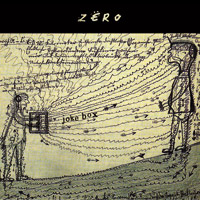 Zero have made an odd, joyful and coherent debut, despite lurching from post-rock tension to whimsical melody, covering Devo, and borrowing vocal styles from at least two eccentric Englishmen.
Zero have made an odd, joyful and coherent debut, despite lurching from post-rock tension to whimsical melody, covering Devo, and borrowing vocal styles from at least two eccentric Englishmen.
Zero includes former members of the group Bastard, and given those names, it is perhaps not too surprising that their accessible and well-structured sound is tinged with an alluring nihilistic nonchalance. The opener "Big Screen / Flat People" has fuzzy, chiming guitar as well as stumbling rhythms familiar to anyone who loves The Fall (an association reinforced by the weird approximation of trademark Mark E Smith vocals: snotty, languid, and yet laser-like). Indeed, a whole album of that would have been absolutely fine with me. But Jokebox shows that Zero has more than one trick up its sleeve.
"Go Stereo" uses a repetitive post-rock riff-and-shuffle to back lyrics about the technical information related to some equipment. "Derby" could slot nicely onto Appliance's unfairly overlooked record Manual. Oddest of all is "Drag Queen Blues," a song that—had Vivian Stanshall pulled a Lord Lucan-style disappearance instead of perishing in a house fire—would have Bonzo Dog Band fans scouring France for a glimpse of the blighter. The loony vocals sound like Viv's whole Vegas-rock-n-roll-in-an-echo-chamber shtick before they accelerate completely into audio-madness.
The instrumental "The Desire and the Importance of Failing" has ticking percussion and a pedal-steel glide that put me in mind of The Books; "Crosby and Garfunkel" is as light and airy as its title suggests; "Pride of the Kids" recovers from worryingly anthemic guitar chords, and mutates into an equally urgent and fluid cousin of Life Without Buildings' "The Leanover"; and the final piece, "Cars, Buses, Etc," meanders through a nocturnal terrain in the footsteps of William S. Burroughs and Robert Quine. The best of Jokebox would have made a very fine EP and there is plenty of promise here. Encore.
samples:
Read More
- Matthew Jeanes
- Albums and Singles
With heavy use of synths that pad out the backing on every track, Lifeline sounds almost like a Cure record with Broadrick playing over it in spots. That's a good thing if you ask me, but I can see how some folks are going to hear this and think that it's a little more lightweight than expected from a guy known for bleak, menacing works of angst. Even when stacked up against other Jesu records, this one seems intentionally more accessible and maybe sentimental, but that's okay.
The truth is, all that heavy grind scream pound collapse type of material just wears on my soul anymore. I still like to get my catharsis on, but there's only so much of that I can take and maybe it's because I just don't feel the need to stick it to the world on a daily basis like I used to. I welcome the softer and more approachable stuff that Jesu is doing now because it still has enough depth to be meaningful but it's not necessarily reliant on bonding with my inner demons to be successful.
The only track here that doesn't work for me is the one where Jarboe sits in on vocals. I've never been a great fan of her work but I know that she's done some things that I like or can appreciate. Here, her voice just seems out of place and forced as it changes through three or four different vocal styles in five minutes. The approach would be fine if the execution were better, or if Jesu didn't do such a tremendous job of creating a consistent ambiance. Her voice in the middle of a Jesu record reminded me of the affect that an M. Night Shyamalan cameo tends to have in his movies—it takes me out of the experience and breaks the vibe just long enough to kill any dramatic momentum. That can be dangerous for a record that's only got four songs on it. Let's all be thankful for customizable playlists!
Read More

